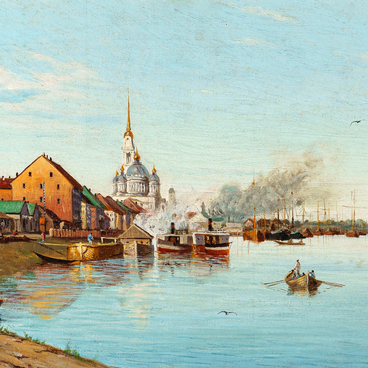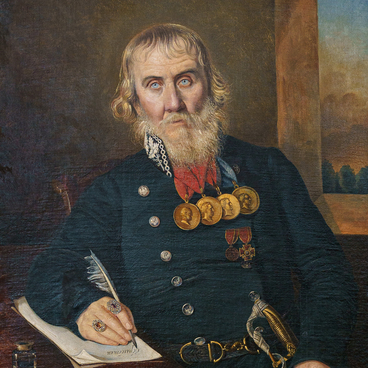The chalice is a sacred vessel used in Christian worship. It consists of a round bowl supported on a high pedestal with a circular base. The chalice plays a significant role in the consecration of wine and the Eucharist. The Russian word for a chalice — potir — is derived from the ancient Greek word “ποτήρ”, meaning “bowl” or “cup”.
As with any object used in religious ceremonies, the chalice holds many symbolic meanings. It is most associated with the Last Supper, when Jesus Christ presented the cup to His disciples. Broadly speaking, the chalice represents the Christian church as a whole.
Since the 4th century, most religious vessels have been crafted from precious metals like gold and silver. These materials were considered suitable for representing the magnificence and significance of the Christian faith.
The chalice on display at the Rybinsk Museum-Reserve was created by the Moscow craftsman Kuzma Konov, who was a member of the commercial and industrial partnership “P.I. Olovyanishnikov & Sons”. The company specialized in the creation of church utensils in the Art Nouveau style. Konov collaborated extensively with Sergey Ivanovich Vashkov, another prominent Moscow Art Nouveau artist and decorator. The exhibit bears the brand of the craftsman “KK”.
A notable feature of this object is the inscription in colored enamel, which can be translated as follows, “Receive ye the Body of Christ; taste ye of the Fountain of Immortality.” It indicates the purpose of the chalice during the liturgy.
In general, this artifact stands out for its sophisticated décor and the techniques used. The vessel is decorated with four oval medallions, each featuring a half-length image of Jesus, John the Baptist, and the Virgin Mary. The medallions are set within a frame, with a stylized floral pattern depicted in painted enamel on top of a filigree pattern. The stem of the vessel is in the form of a baluster, and is decorated with intertwining palm leaves and arches. The pedestal takes the shape of an inverted round bowl with a broad, curved edge. Along this edge, there are four medallions carved with images of the evangelists and their respective symbols. Between these medallions lie smooth curls and clusters of leaves in an ornamental design.









